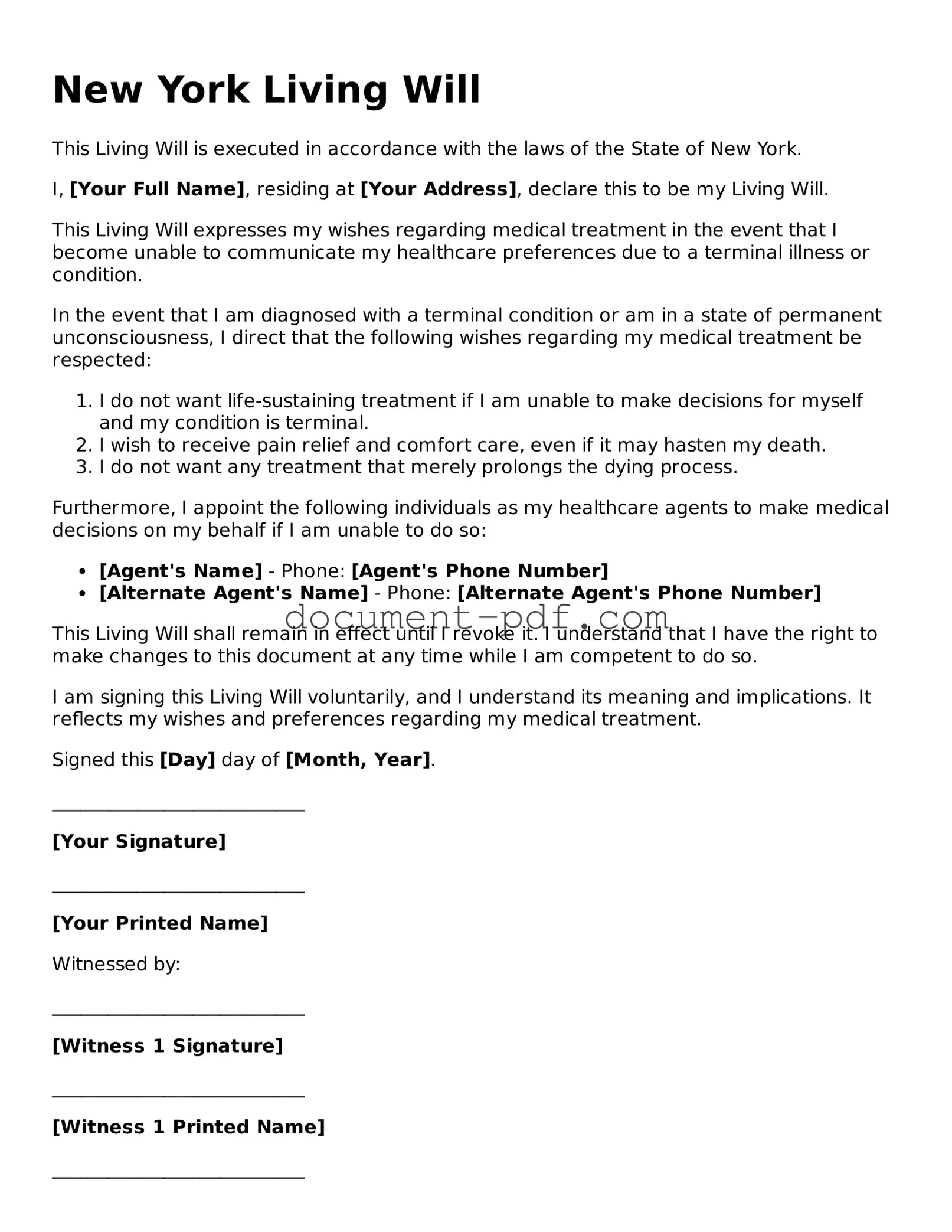New York Living Will
This Living Will is executed in accordance with the laws of the State of New York.
I, [Your Full Name], residing at [Your Address], declare this to be my Living Will.
This Living Will expresses my wishes regarding medical treatment in the event that I become unable to communicate my healthcare preferences due to a terminal illness or condition.
In the event that I am diagnosed with a terminal condition or am in a state of permanent unconsciousness, I direct that the following wishes regarding my medical treatment be respected:
- I do not want life-sustaining treatment if I am unable to make decisions for myself and my condition is terminal.
- I wish to receive pain relief and comfort care, even if it may hasten my death.
- I do not want any treatment that merely prolongs the dying process.
Furthermore, I appoint the following individuals as my healthcare agents to make medical decisions on my behalf if I am unable to do so:
- [Agent's Name] - Phone: [Agent's Phone Number]
- [Alternate Agent's Name] - Phone: [Alternate Agent's Phone Number]
This Living Will shall remain in effect until I revoke it. I understand that I have the right to make changes to this document at any time while I am competent to do so.
I am signing this Living Will voluntarily, and I understand its meaning and implications. It reflects my wishes and preferences regarding my medical treatment.
Signed this [Day] day of [Month, Year].
___________________________
[Your Signature]
___________________________
[Your Printed Name]
Witnessed by:
___________________________
[Witness 1 Signature]
___________________________
[Witness 1 Printed Name]
___________________________
[Witness 2 Signature]
___________________________
[Witness 2 Printed Name]
